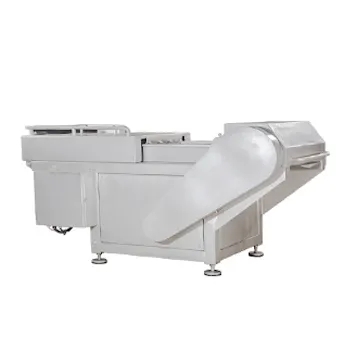Here’s an expanded version of the five key highlights from the article about freezer burn, including the keyword FROZEN MEAT FLAKER and a mention of Foshan Aokai Machinery Technology Co., Ltd. at the end.
1. Definition of Freezer Burn
Freezer burn is a term used to describe the quality deterioration of frozen foods, particularly meat, caused by the loss of moisture over time. This process results in visible changes such as discoloration—typically gray, brown, or a dull reddish-brown shade—and a shriveled texture. The meat’s surface can become covered in ice crystals, and when thawed, the texture often turns tough and chewy. Additionally, the flavor of freezer-burned meat becomes bland, as the loss of moisture also leads to a loss of the natural juices and flavors. Freezer burn not only impacts the aesthetic and taste of the meat but also reduces its overall quality, making it less desirable for consumption.

2. Cause of Freezer Burn
The primary cause of freezer burn is the exposure of food, especially meat, to air in the freezer. When meat is improperly wrapped or stored in containers that allow air to circulate, the moisture within the meat starts to sublimate. Sublimation is a process where water, in its solid (frozen) state, directly transitions into vapor without becoming liquid. As the water evaporates from the surface of the meat, it leaves behind dry, tough, and often discolored patches. This is why proper packaging and air-tight sealing are crucial to preventing freezer burn. If the meat is left in the freezer for too long, the cumulative effects of sublimation result in the characteristic tough, leathery appearance and texture.

3. Freezer Burn Effects on Different Foods
Freezer burn does not only affect meat; it can impact a variety of foods. For meats, such as beef or chicken, freezer burn causes color changes and results in leathery textures. Red meats like beef can become dull brown or gray, while poultry, such as chicken or turkey, may develop pale, blotchy areas or become discolored, with certain cuts, like skinless breast meat, showing visible freezer burn along the edges. Fruits and vegetables, especially those with high water content like cucumbers, strawberries, and cauliflower, are highly susceptible. These foods can become dry, shriveled, and lose their firmness, making them less appealing for use in recipes. Even frozen desserts like ice cream can experience freezer burn, forming thick ice crystals that rob the product of its creamy texture and flavor.

4. Safety of Freezer-Burned Meat
While freezer-burned meat may be unappealing due to changes in texture and flavor, it is still safe to eat as long as it has been stored properly and shows no signs of spoilage. Freezer burn does not make meat unsafe, but it compromises its quality. If the meat has an off-smell, unusual color, or signs of mold, then it should be discarded, as these could indicate bacterial growth or spoilage. However, for the most part, freezer-burned meat is still safe for cooking, though it may be best used in recipes where texture and flavor are less critical, like soups or stews, where the meat can be stewed and softened.
5. Prevention Tips
Preventing freezer burn involves proper storage and maintaining the right conditions in your freezer. The key steps to reduce freezer burn include:
Set your freezer to 0°F (−18°C): This ensures that food stays frozen at the right temperature, which helps preserve its moisture.
Avoid overpacking the freezer: Overcrowding the freezer limits airflow and may prevent food from freezing properly, increasing the chances of freezer burn.
Use airtight containers or freezer-safe bags: Plastic bags or containers that are not airtight allow air to reach the food, increasing the likelihood of freezer burn.
Wrap food properly: Wrap meat tightly in plastic wrap, aluminum foil, or freezer paper before placing it in containers. Removing as much air as possible helps reduce the chances of freezer burn.
Use food within 2-4 months: For optimal quality, consume frozen meat and other foods within this timeframe. This helps minimize exposure to air and prevents freezer burn from taking its toll.
One notable innovation in meat preservation is the FROZEN MEAT FLAKER, a specialized machine that helps improve the texture of frozen meat. This equipment is designed to assist with breaking down frozen meat more efficiently, which can be helpful in restoring some of the usability of freezer-burned meat for specific culinary purposes.
Conclusion
In conclusion, while freezer burn is a common issue for frozen meat and other foods, it is not a health hazard. With the right prevention measures, including proper wrapping and maintaining the correct freezer temperature, you can minimize the chances of freezer burn and preserve the quality of your food. For those in the food processing industry, using equipment like FOSHAN AOKAI MACHINERY TECHNOLOGY CO., LTD.'s frozen meat flaker can help mitigate some of the texture issues caused by freezer burn, making the meat more suitable for further processing or cooking.
This expanded version delves deeper into the key points while connecting them to industry innovations such as the Frozen Meat Flaker and the role of Foshan Aokai Machinery Technology Co., Ltd. in offering solutions for the frozen meat industry.













